HumanSD: A Native Skeleton-Guided Diffusion Model for Human Image Generation
HumanSD highlights multi-scenario human-centric image generation with precise pose control, which reaches State-of-the-art performance in terms of pose and image quality.

HumanSD highlights multi-scenario human-centric image generation with precise pose control, which reaches State-of-the-art performance in terms of pose and image quality.

Controllable human image generation (HIG) has numerous real-life applications. State-of-the-art solutions, such as ControlNet and T2I-Adapter, introduce an additional learnable branch on top of the frozen pre-trained stable diffusion (SD) model, which can enforce various conditions, including skeleton guidance of HIG. While such a plug-and-play approach is appealing, the inevitable and uncertain conflicts between the original images produced from the frozen SD branch and the given condition incur significant challenges for the learnable branch, which essentially conducts image feature editing for condition enforcement.
In this work, we propose a native skeleton-guided diffusion model for controllable HIG called HumanSD. Instead of performing image editing with dual-branch diffusion, we fine-tune the original SD model using a novel heatmap-guided denoising loss. This strategy effectively and efficiently strengthens the given skeleton condition during model training while mitigating the catastrophic forgetting effects. HumanSD is fine-tuned on the assembly of three large-scale human-centric datasets with text-image-pose information, two of which are established in this work. HumanSD outperforms ControlNet in terms of accurate pose control and image quality, particularly when the given skeleton guidance is sophisticated.

Overview. (a) shows the proposed framework HumanSD with a novel heatmap-guided denoising loss. (b) shows the recent SOTA method, ControlNet, which doubles an SD UNet encoder for condition extraction and freezes the original SD branch to maintain image generation ability.

Natural Scene
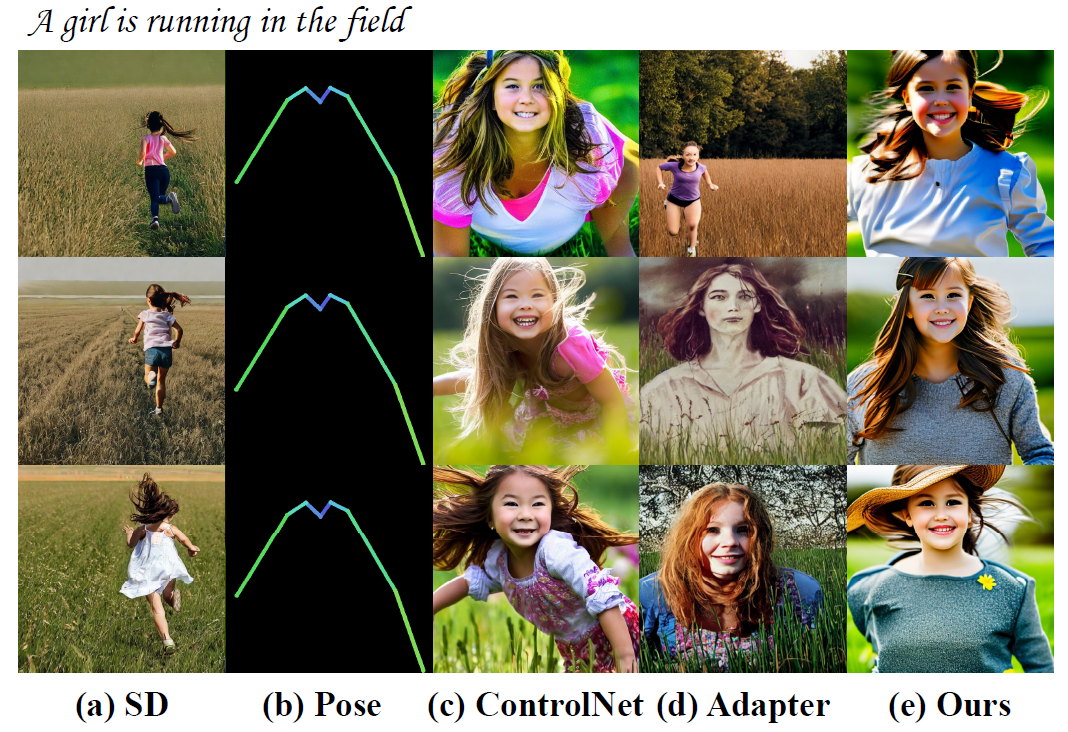
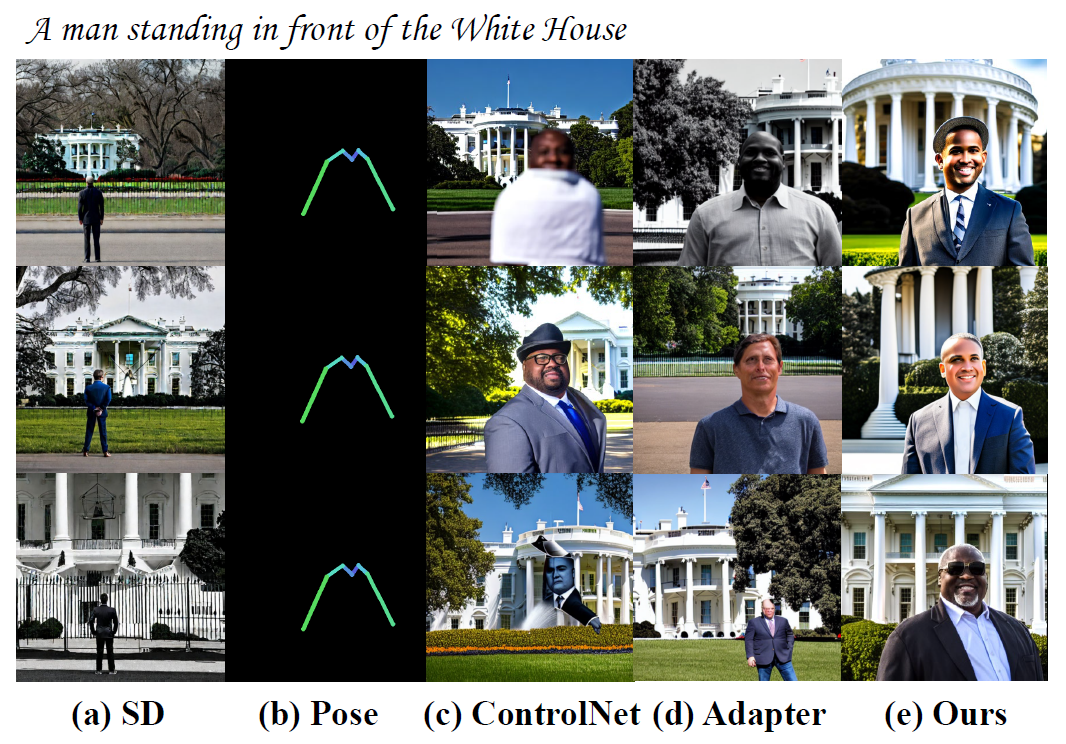
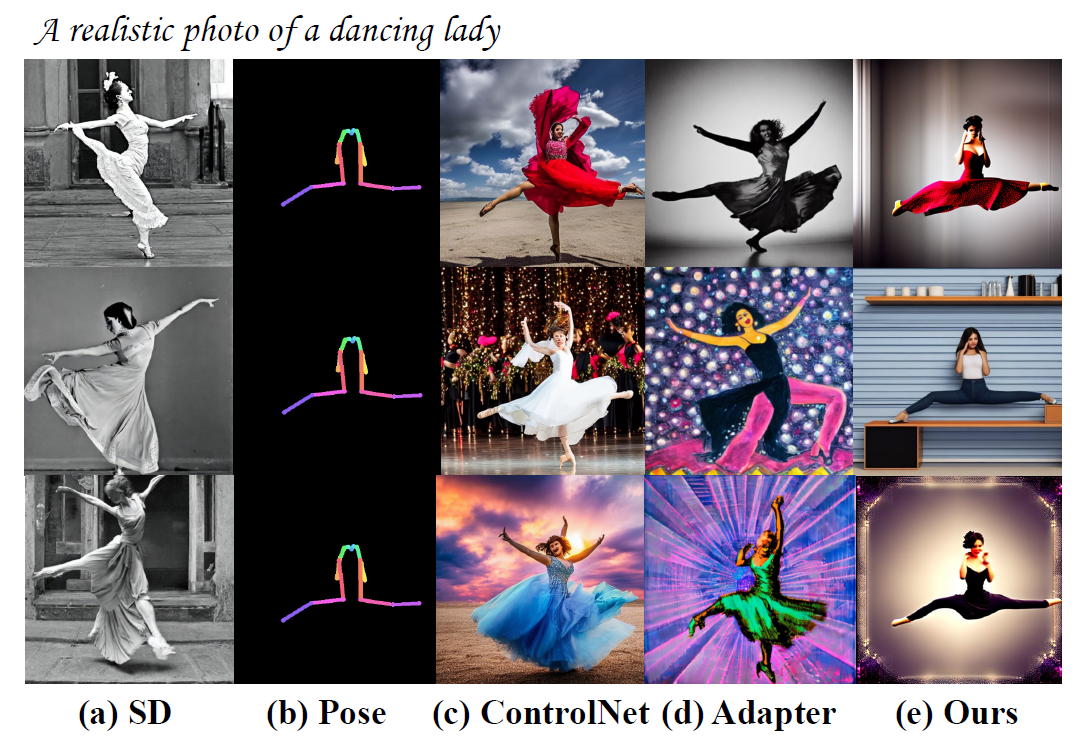
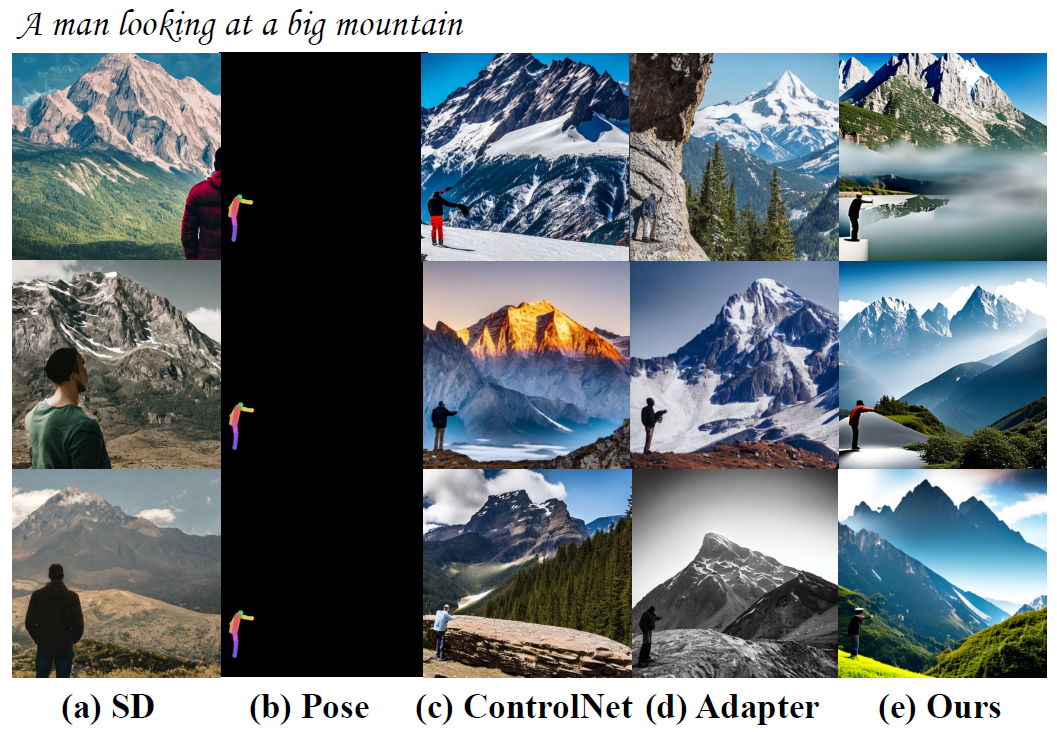

Sketch Scene


Shadow Play Scene
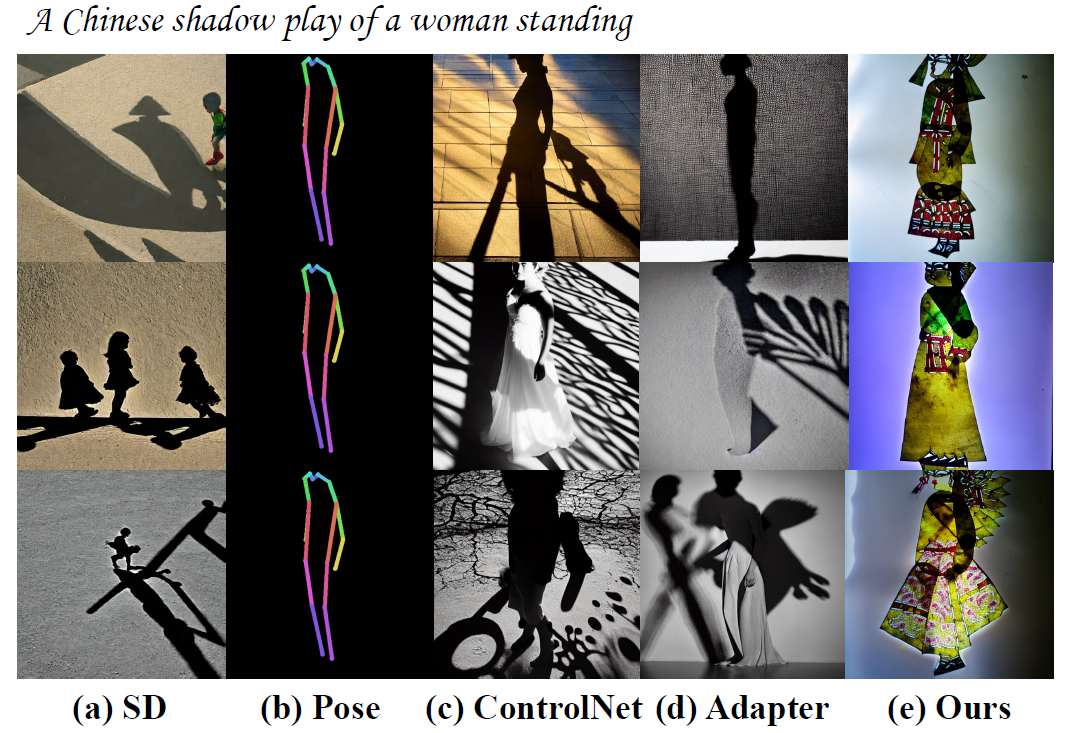
Children Drawing Scene
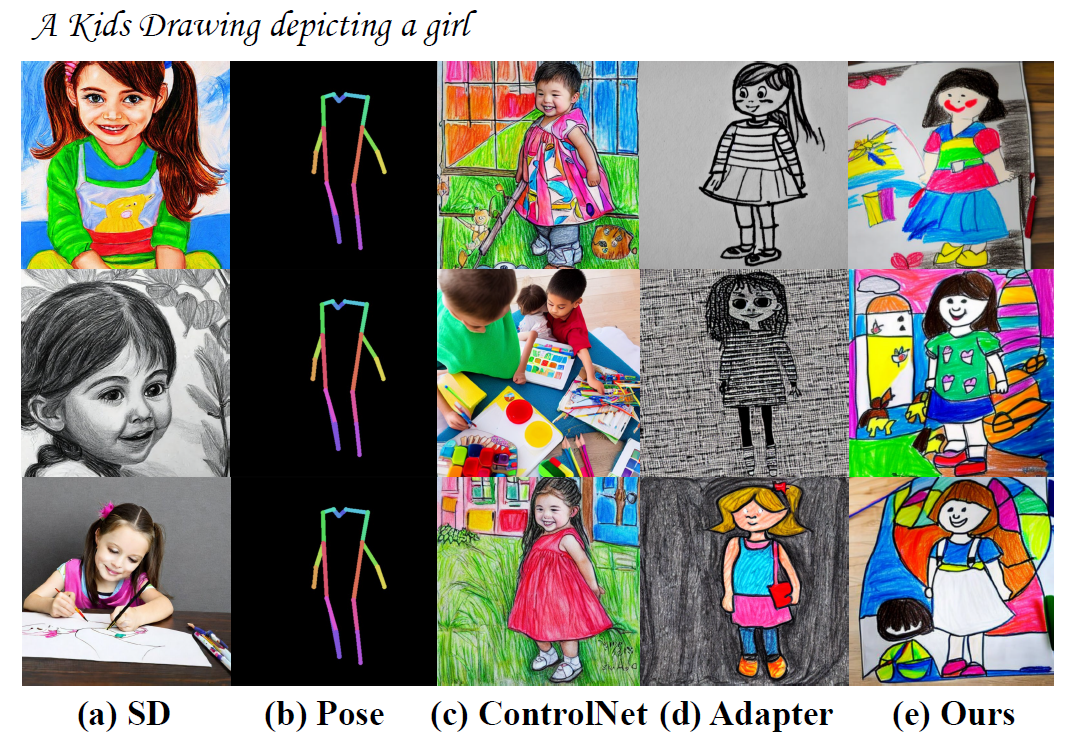
Oil Painting Scene
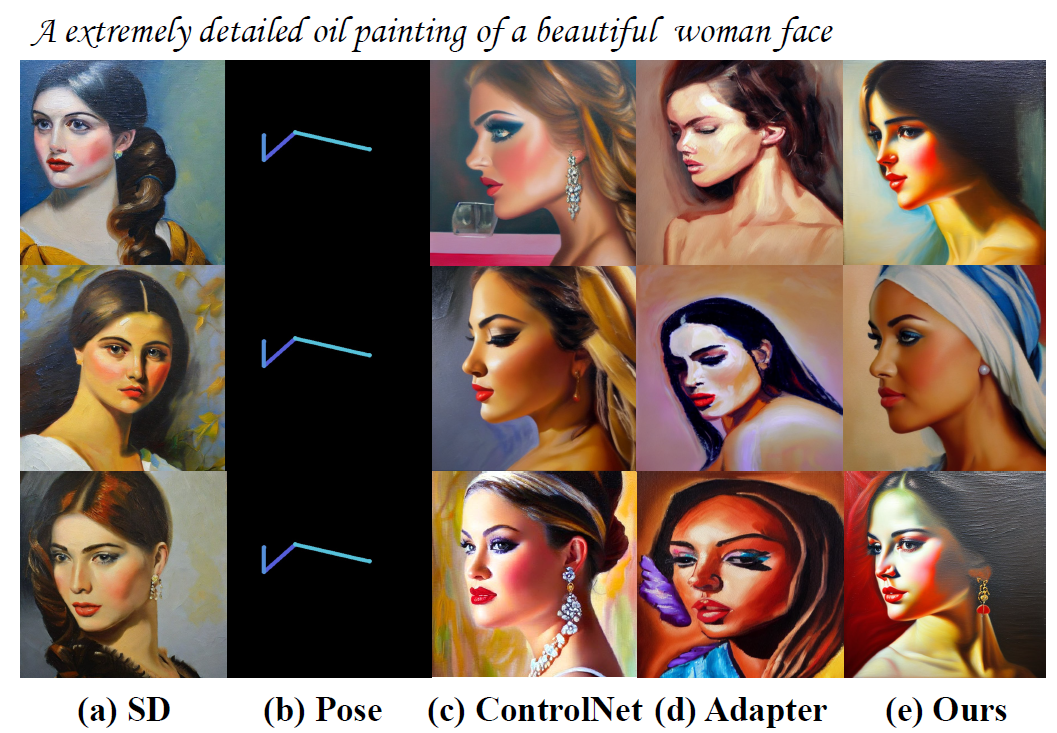
Watercolor Scene

Digital Art Scene

Relief Scene

Sculpture Scene

For detailed questions about this work, please contact juxuan.27@gmail.com
We are looking for talented, motivated, and creative research and engineering interns working on human-centric visual understanding and generation topics. If you are interested, please send your CV to Ailing Zeng (zengailing@idea.edu.cn).
@article{ju2023humansd,
title={HumanSD: A Native Skeleton-Guided Diffusion Model for Human Image Generation},
author={Ju, Xuan and Zeng, Ailing and Zhao, Chenchen and Wang, Jianan and Zhang, Lei and Xu, Qiang},
journal={arXiv preprint arXiv:2304.04269},
year={2023}
}
@inproceedings{ju2023human,
title={Human-Art: A Versatile Human-Centric Dataset Bridging Natural and Artificial Scenes},
author={Ju, Xuan and Zeng, Ailing and Wang, Jianan and Xu, Qiang and Zhang, Lei},
booktitle={Proceedings of the IEEE/CVF Conference on Computer Vision and Pattern Recognition},
year={2023},
}